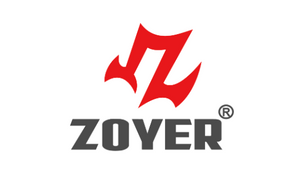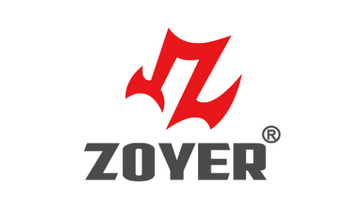Back pain creeping in during your workday? Whether you’re sitting at a desk or lifting on the job, the right back brace can ease the strain and keep you going. In this guide, we’ll help you figure out when to wear one, which type fits your job, and how to care for it.
Shop Zoyer Back Braces for Work Now →
When Should You Wear Back Brace at Work?
Not sure if you need a back brace at work?
The truth is, while it’s not something you need 24/7, wearing the right support at the right time can make a huge difference.
A good back brace for work helps reduce muscle fatigue, improves posture, and protects your spine—especially in jobs that put extra strain on your lower back.
Standing all day?
If your job keeps you on your feet—like retail, healthcare, or manufacturing—your lower back muscles are under constant pressure.
Over time, this can lead to fatigue, poor posture, and even misalignment.
Lifting or bending repeatedly?
For warehouse workers, movers, and delivery drivers, all that lifting and twisting adds up.
A work back brace can help stabilize your core and prevent sudden injuries from repetitive stress.
Sitting too long at a desk?
You might not think office work is tough on your back, but sitting for hours (especially with poor posture) compresses the spine and weakens your core muscles.
A lightweight brace can serve as a gentle reminder to sit tall and support your lower back throughout the day.
Recommended Brace Usage by Work Scenario
| Scenario | Lower Back Load | Recommended Usage |
|---|---|---|
| Prolonged Standing | Continuous compressive load | 2 hours every 4 hours |
| Heavy Lifting/Bending | High, sudden stress | Entire duration of task |
| Office Work | Constant static pressure | 30 minutes, three times daily |
Which Back Brace Fits Your Job? Industry-Specific Recommendations
Not all work is created equal—and the same goes for your back support.
Whether you're on a construction site or behind a desk, the right back brace for your job can help prevent injuries, reduce pain, and keep you moving comfortably throughout the day.
Construction & Heavy Machinery Jobs
Jobs that involve lifting, drilling, or handling heavy equipment require serious support. A rigid or semi-rigid back brace offers maximum stability, helping you avoid strain and protect your spine during high-risk movements.
Warehouse, Logistics & Delivery Roles
If you're constantly lifting, twisting, or moving on your feet, flexibility and breathability matter.
Look for a semi-rigid brace with mesh and elastic materials—it gives you the support you need without slowing you down.
Office Work & Long Sitting Hours
Think sitting is harmless? Think again. Poor posture from long hours at your desk can lead to chronic discomfort.
A lightweight elastic brace works great for posture correction and everyday comfort—without restricting your movement.
Recommended Braces by Industry
| Industry/Role | Recommended Support | Key Benefits | Preferred Material |
|---|---|---|---|
| Construction / Heavy Duty | Rigid / Semi-rigid | Maximum stabilization | Reinforced Nylon |
| Warehouse / Logistics | Semi-rigid | Breathable, flexible support | Mesh and Elastic |
| Office Work | Elastic | Comfortable, posture support | Elastic Fabric |
Brace Material & Function Breakdown
The choice of material significantly influences a brace’s support, comfort, and practicality.
Breathable Mesh
- Pros: Lightweight and breathable, ideal for long shifts.
- Cons: Lower support for heavy-duty tasks.
Reinforced Nylon
- Pros: Highly durable, provides strong support.
- Cons: Less breathable, might be uncomfortable over long periods.
Elastic Bands
- Pros: Conforms well, adjustable tension.
- Cons: Prone to stretching over time, moderate durability.
Comparison of Brace Materials
| Material Type | Breathability | Support Level | Weight | Durability |
|---|---|---|---|---|
| Mesh | ★★★★☆ | ★★☆☆☆ | ★★★★★ | ★★★☆☆ |
| Reinforced Nylon | ★★☆☆☆ | ★★★★★ | ★★☆☆☆ | ★★★★★ |
| Elastic Bands | ★★★☆☆ | ★★★☆☆ | ★★★☆☆ | ★★☆☆☆ |
Choosing the Right Support Level
Not sure which type of back brace is best for your job? Let’s break it down in a way that actually makes sense for your daily routine. Whether you’re lifting heavy loads or sitting through endless meetings, choosing the right support level can make all the difference in how your body feels at the end of the day.
Rigid Support
This is your go-to if you’re doing intense physical work—think construction, warehouse loading, or recovering from surgery. It offers top-tier stability, though it can feel a bit restrictive.
Semi-Rigid Support
Semi-rigid braces give you the best of both worlds. They’re firm enough to support your lower back through moderate tasks, but flexible enough to wear all day without discomfort. Perfect for logistics, light lifting, or mixed desk-and-floor roles.
Elastic Support
This type is soft, breathable, and super comfy—ideal if you're sitting for hours or just need a little posture reminder throughout your shift.
| Support Level | Stability | Comfort | Best Suited For |
|---|---|---|---|
| Rigid | ★★★★★ | ★☆☆☆☆ | Heavy lifting, post-surgery recovery |
| Semi-Rigid | ★★★★☆ | ★★★☆☆ | Moderate activity, daily wear |
| Elastic | ★★☆☆☆ | ★★★★★ | Office work, light activities |
Sizing and Fit Guide
Wearing the right size back brace makes all the difference—not just for comfort, but for real support where your body needs it most. So before you click that “Add to Cart” button, let’s talk sizing.
How to Measure Your Waist
Grab a soft measuring tape and wrap it around your waist—right at the level of your belly button. That’s your true waist measurement, and it’s what most braces are sized from.
Hip & High-Waist Coverage
Some back braces offer extended coverage over your hips or sit a bit higher on your waist for extra support. If your job involves a lot of movement or twisting, that added stability might be exactly what you need.
Strap Adjustments Matter
A great fit should feel snug but never suffocating. Make sure your brace has adjustable straps that distribute pressure evenly across your lower back—without digging into your skin or riding up when you move.
Standard Back Brace Size Chart
| Size | Waist (cm) | Hips (cm) | Adjustment Range (cm) |
|---|---|---|---|
| S | 60–75 | 80–95 | 5–10 |
| M | 75–90 | 95–110 | 5–10 |
| L | 90–105 | 110–125 | 5–10 |
| XL | 105–120 | 125–140 | 5–10 |
Top Zoyer Back Braces for Work
Looking for a reliable back brace that can keep up with your workday? Zoyer has a range of options designed for different work environments—whether you're lifting heavy equipment or sitting at a desk for hours. Here's a quick comparison to help you find your best fit.
| Product Name | Support Type | Suitable Conditions | Key Features |
|---|---|---|---|
| ZOYER Recovery+ Essential Back Brace | Semi-rigid | Heavy lifting, chronic discomfort | Dual pulley, lumbar pad, durable straps |
| ZOYER Recovery Back Brace | Semi-rigid | Moderate lumbar strain, daily wear | Moisture-wicking mesh, ergonomic design |
| ZOYER Prevention Back Brace | Elastic | Office posture correction | Lightweight, breathable mesh, flexible fit |
Shop Zoyer Back Braces for Work Now →
Maintenance & Cleaning Tips
Want to make your Zoyer back brace last? With just a little care, you can keep it clean, comfortable, and supportive for the long haul. Here's how:
- Wipe down your brace weekly using a mild detergent to remove sweat and dust.
- If your brace has removable parts, wash them thoroughly once a month.
- Inspect your brace regularly for signs of wear—like stretched straps or weakened Velcro—so you know when it’s time for a replacement.
Common FAQs
- Can I wear a brace all day? Limit to 6–8 hours to avoid muscle dependence.
- How to pick the right support level? Match to your task intensity—more load = more support.
- Is it a replacement for therapy? No, but it complements recovery.
- Does fit matter? Absolutely—measure your waist and adjust for snug, non-restrictive comfort.
Final Thoughts
Back pain doesn’t need to be part of your job. With the right brace—matched to your task, material preference, and comfort—you’ll stay active, aligned, and supported all day long.
Shop Zoyer Back Braces for Work Now →

